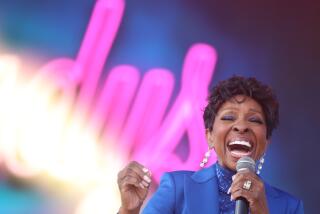Glamorous Follies of Main Street
This isnât the first time the faithful who built St. Vibianaâs Cathedral have sought to demolish it.
After the turn of the century, the church anchored the cultural spine of a growing city, and theaters lined the dirt-road, horse-trodden Main Street. But Bishop Thomas J. Conaty wanted to build a new, immense domed cathedral on 9th Street.
Although the bishop received papal permission in 1904 to tear down St. Vibianaâs, the effort failed because a local economic depression meant no one had the money to donate for a replacement.
That same year, flamboyant producer David Belasco built his namesake theater at 3rd and Main streets.
The city was alive with vaudeville theaters, and Main Street was the hub. The Merced at Arcadia Street, Orpheum Grand at 1st Street, Hippodrome at 3rd Street and the Burbank at 5th Street all offered a variety of diversions.
One of the biggest, the Belasco Theater, was a glamorous playhouse featuring fashionable drawing-room comedies starring such performers as W. C. Fields, Lewis Stone, Charles Ruggles, Marjorie Rambeau, Hobart Bosworth, Nance OâNeil and Joe Yule (Mickey Rooneyâs father). They alternated with the more sophisticated offerings, like composer and pianist Ignace Jan Paderewski and the great contralto, Ernestine Schumann-Heink.
By 1926, as the city began to expand westward, the theater district moved to Broadway, where theatrical palaces ran movies as well as vaudeville shows. The Belasco name was taken down from Main Street to be used on another theater on Hill Street; the Main Street playhouse became the Follies--home of burlesque, and the beginning of Main Streetâs long decline. The Union Rescue Mission had already moved to Main Street, next door to the cathedral.
In an era when women were still wearing bathing suits that reached almost to their knees, striptease queens such as Gypsy Rose Lee and Ann Corio were being paid thousands of dollars to undress. Although the degree of exposure on stage paled by modern standards, two reform-minded fire-and-brimstone preachers set the moral tone and cultural agenda for Los Angeles, ready to bring down the wrath of God on anyone they deemed evil.
One evening in 1927, the Rev. âFighting Bobâ Shuler and the Rev. Gustav Briegleb went to the Follies to see the talked-about âHot Mamma Revue.â But instead of inviting the cast to church the next day, they informed the police commissioner, and the theater was soon raided.
Although the pastorsâ testimony stirred up a storm during the weeklong trial, it still took only six hours for an all-male jury to exonerate the 27 women accused of indecent exposure.
A decade later, the pastors had split over accusations that one of them accepted money from a reformed mobster, and the theater was still going strong.
Comedienne Mae Westâs cache of immortal quips and burlesque show sketches made sex a laughing matter. In 1937, hundreds of Angelenos stood outside the Follies Theater to get a glimpse of West as she was filming the movie âEvery Dayâs a Holiday,â which she starred in and wrote--a double play rarely equaled by Hollywoodâs men or women today.
The Follies stage manager, Lilian Hunt, promised customers sensations. People lined up for blocks to see voluptuous Tempest Storm, stripteasingâs âOriginal Ball of Fire,â Betty Rowland, or long-legged Lili St. Cyrâs onstage bubble bath. Dixie Evans, another headliner, couldnât sing or dance, but in her striptease act, she âbecameâ Marilyn Monroe.
*
Backstage amid the maze of staircases, the bulletin boards and the stale air heavy with cigarette smoke, a ghost named Alice was rumored to reside. Over the years, some chorus girls heard strange noises and even saw a dancer pulled from the chorus line into the wings by invisible hands. Some believe it was Alice, a former showgirl who had apparently been murdered by a jealous boyfriend.
World War II brought servicemen and zoot-suiters to Main Street, which became a place to carouse, get tattooed, drink and raise hell.
By the late 1960s, patrons occupying the once-plush seats of Los Angelesâ last burlesque theater watched an odd assortment of young and middle-aged women take their clothes off, while a rickety band of trumpet, drums and shrill saxophones provided the accompaniment.
The Follies was raided, closed and reopened almost a dozen times before the band and strippers were replaced in the early 1970s by pornographic movies.
In 1974, the defunct old theater with its rusting marquee was demolished and replaced by a parking lot.
More to Read
The biggest entertainment stories
Get our big stories about Hollywood, film, television, music, arts, culture and more right in your inbox as soon as they publish.
You may occasionally receive promotional content from the Los Angeles Times.










